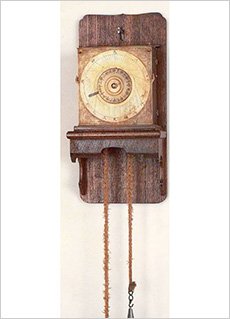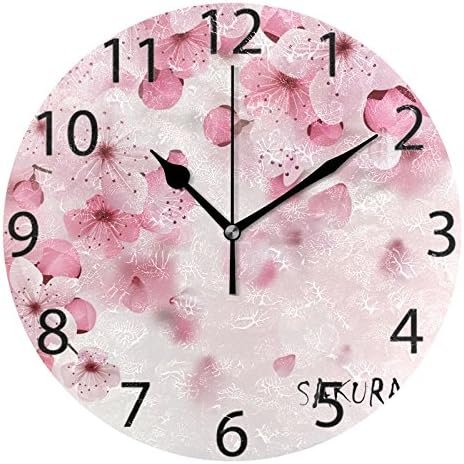Cleaning Japanese clocks requires careful attention to detail to preserve their intricate craftsmanship and functionality. This guide provides step-by-step instructions on how to properly clean Japanese clocks, ensuring they remain in excellent condition without causing damage.
Understanding Your Japanese Clock
Identifying the Type
Mechanical Clocks: Mechanical Japanese clocks often have delicate gears and intricate components. Understanding whether your clock is a pendulum, mantel, or wall clock will influence the cleaning method.
Quartz Clocks: Quartz clocks, though less complex internally, may have digital displays or other features that require specific cleaning techniques.
Gathering Supplies
Cleaning Materials: Prepare a soft, lint-free cloth, a small brush, compressed air, and clock-specific cleaning solutions. Avoid harsh chemicals or abrasive materials that could damage the clock’s surface.
Tools for Access: For mechanical clocks, you might need small screwdrivers or other tools to access the internal components. Use these tools carefully to avoid damaging the clock.
Cleaning the Exterior
Dusting the Surface
Regular Dusting: Use a soft, dry cloth to gently dust the clock’s exterior. Dust buildup can affect both the appearance and functionality of the clock.
Avoiding Moisture: Keep moisture away from the clock’s surface, as it can damage the finish or penetrate internal components. Use a slightly dampened cloth only if absolutely necessary and ensure it is thoroughly wrung out.
Cleaning the Glass and Dial
Wiping the Glass: Clean the glass or acrylic cover with a soft, lint-free cloth. If needed, use a glass cleaner that is safe for delicate surfaces, applying it sparingly to avoid residue.
Cleaning the Dial: Gently wipe the dial with a soft cloth. Be cautious around any printed or painted details to prevent smudging or damage.
Cleaning the Interior
Accessing the Mechanism
Opening the Case: Carefully open the clock case using the appropriate tools. Consult the clock’s manual or a professional if you’re unsure how to access the internal components.
Protecting the Interior: Once open, protect the interior from dust and accidental contact. Work in a clean, well-lit environment to avoid introducing contaminants.
Removing Dust and Debris
Using Compressed Air: Use compressed air to blow out dust from the internal components. Direct the air away from delicate parts to avoid damaging the mechanism.
Soft Brush: For stubborn dust, use a small, soft brush to gently sweep away particles. Avoid using excessive force, which could dislodge or damage sensitive parts.
Lubrication and Maintenance
Checking Lubrication: If your clock is mechanical, check for signs of dryness or stiffness in the movement. Use a clock-specific lubricant to apply a small amount of oil to moving parts.
Avoid Over-Lubrication: Be cautious not to over-lubricate, as excess oil can attract dust and cause problems. Follow the manufacturer’s recommendations for lubrication intervals.
Special Considerations
Antique Clocks
Preservation: Antique Japanese clocks may have fragile finishes and historical value. When cleaning antiques, prioritize preservation and consult a professional if needed.
Gentle Techniques: Use the gentlest cleaning methods possible and avoid any abrasive tools or chemicals. Preservation is key to maintaining both the clock’s appearance and its historical integrity.
Quartz Clocks
Digital Displays: For quartz clocks with digital displays, use a soft, dry cloth to clean the screen. Avoid applying liquids directly to the display, as they can cause damage.
Battery Compartment: If accessing the battery compartment, clean any corrosion or residue with a dry cloth. Ensure the compartment is free of moisture before reinserting the battery.
Professional Cleaning and Repairs
Seeking Expertise
Professional Help: If your clock requires extensive cleaning or repairs, seek the expertise of a professional clockmaker or restoration specialist. They can handle intricate cleaning and maintenance tasks that require specialized knowledge.
Avoiding DIY Repairs: For complex issues or internal cleaning, avoid attempting repairs yourself. Incorrect handling can lead to further damage and affect the clock’s functionality.
Conclusion
Properly cleaning Japanese clocks involves careful handling and attention to detail to preserve their intricate design and functionality. By following these steps, you can ensure that your clock remains in excellent condition, maintaining its beauty and accuracy for years to come. Regular maintenance and professional care when needed will help protect your timepiece and enhance its longevity.
Meta Description: Learn how to properly clean Japanese clocks with expert tips on dusting, cleaning the interior, and maintaining functionality. Preserve your timepiece’s beauty and accuracy.




Die Vorteile einer 10 Euro Einzahlung in einem Online Casino mit paysafecard umfassen ein geringeres Risiko und eine bessere
Kontrolle über das eigene Spielbudget. Paysafecard Casinos mit 10 Euro Mindesteinzahlung bieten eine zugängliche
und sichere Option für Online Spieler. Diese Apps bieten eine intuitive Benutzeroberfläche,
schnellen Zugriff auf eine Vielzahl von Spielen und die Möglichkeit, unterwegs zu spielen.
Bereits ab einer Einzahlung von 10€ kann der Wildz Einzahlungsbonus aktiviert werden. Einzahlungen über die Paysafecard können auch bei Wildz ohne
große Hindernisse abgewickelt werden. Dabei kann der Tipico Willkommensbonus
mit sämtlichen Zahlungsoptionen und einer Einzahlung von mindestens 10€ aktiviert werden. Zusätzlich akzeptiert das Online
Casino Ein- und Auszahlungen über PayPal, Mastercard, VISA, und Neteller.
Für die Aktivierung des NetBet Neukundenbonuslässt sich die Paysafecard problemlos für
die Einzahlung von mindestens 10€ nutzen. Darüber hinaus kann mit einer Einzahlung von mindestens 10€ ein 200% Willkommensbonus bis zu 100€ aktiviert werden.
Andreas Sagel ist im Bereich der Online-Casino-Branche
ein Experte für Zahlungsanbieter und Finanztechnologien. Außerdem lässt sich das Guthaben über die 12-stellige PIN schnell überspielen. Fast alle
Paysafe Card Casino Angebote schließen den Neukundenbonus mit
ein. In allen Online Casinos, welche die Zahlungsweise anbieten und dort in der Kasse.
Paysafecard Beträge sind auf den Prepaidkarten aufgedruckt.
References:
https://online-spielhallen.de/umfassender-leitfaden-zum-total-casino-bonus-code/